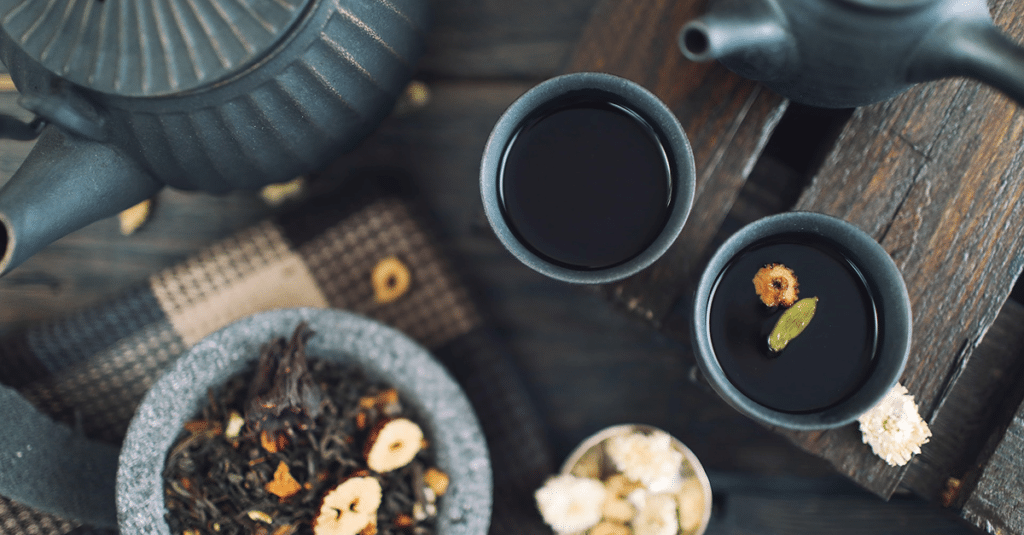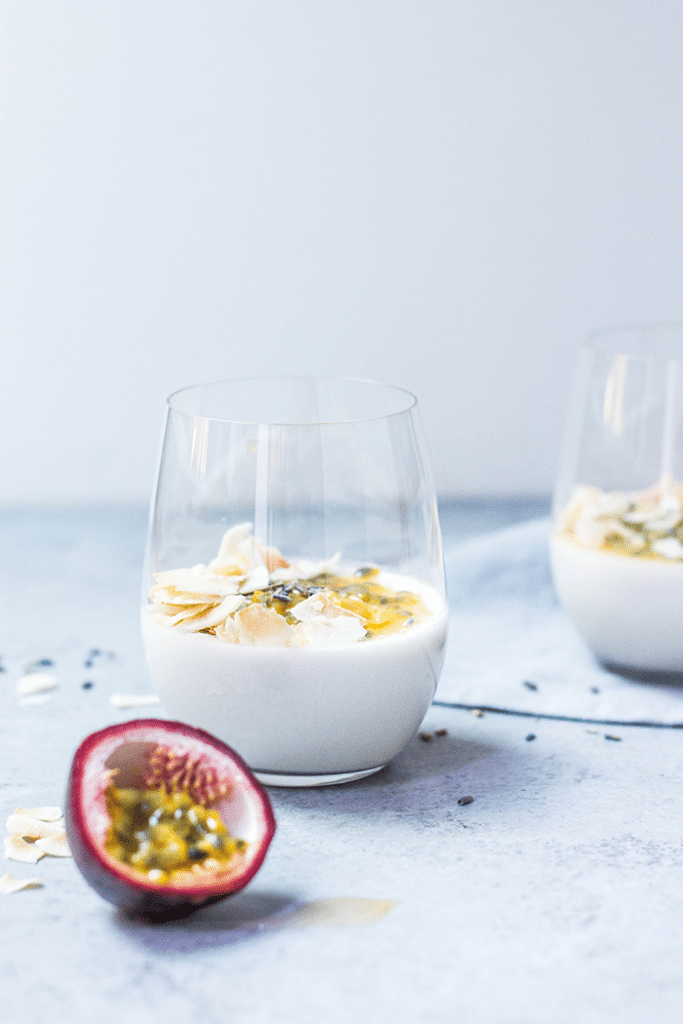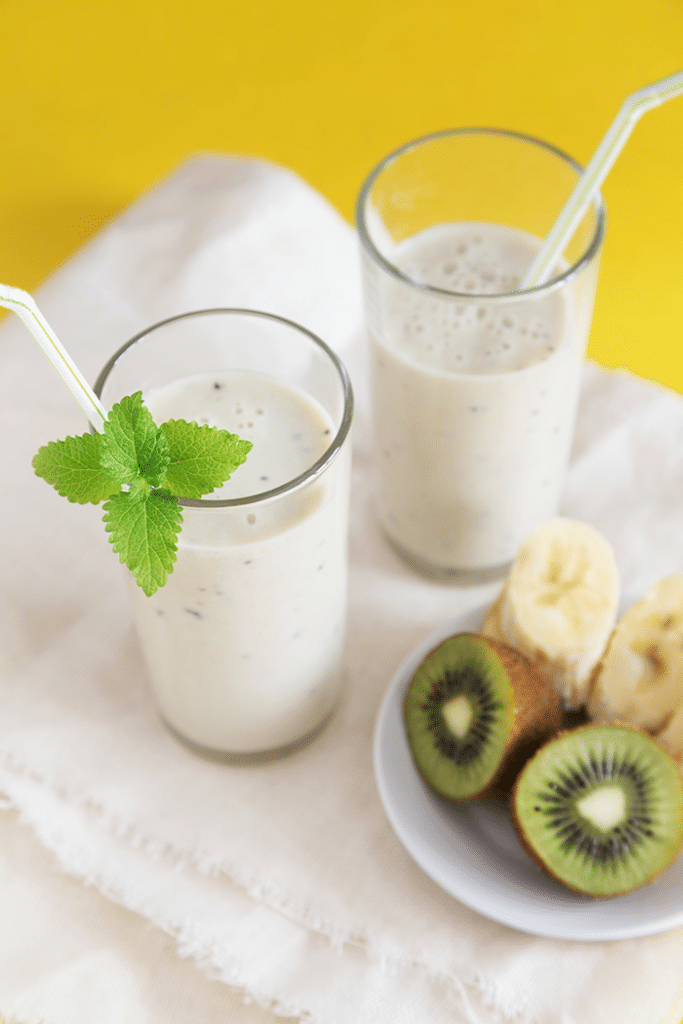
Exploring Fermented Beverages: Kefir, Jun Tea, and Switchel
Fermented beverages have been gaining immense popularity in recent years as people rediscover the age-old tradition of fermenting foods and beverages.
From kombucha to sauerkraut, these fermented delights have found their way into the mainstream, captivating taste buds and health enthusiasts alike.
Fermentation, a process that involves the conversion of sugars into alcohol or organic acids by microorganisms like bacteria and yeast, has been utilized for centuries as a means of preserving and enhancing the flavours of various food and beverage products.

However, the resurgence of interest in fermented beverages goes beyond mere culinary delight, as these elixirs offer a range of potential health benefits.
The significance of fermented foods lies in their ability to cultivate a thriving community of beneficial bacteria, also known as probiotics, in our digestive system.
These probiotics play a crucial role in maintaining a healthy gut microbiome, which is essential for overall well-being. A balanced gut microbiome has been associated with improved digestion, enhanced immune function, and even mental well-being.
As fermented beverages have taken centre stage in the quest for optimal health, it becomes imperative to explore some of the most popular options in this realm.
In this article, we delve into the world of kefir, Jun tea, and switchel, three remarkable fermented beverages that offer not only tantalizing flavours but also potential health-boosting properties.
By understanding their origins, fermentation processes, unique characteristics, and health benefits, we can fully appreciate the wonders that these beverages have to offer. So, let’s embark on this flavourful journey and uncover the secrets of kefir, Jun tea, and switchel.
Kefir: The Probiotic Powerhouse
Kefir, derived from the Turkish word “keif,” meaning “good feeling,” is a fermented beverage with a rich history dating back thousands of years.
It is believed to have originated in the Caucasus Mountains, where nomadic shepherds discovered that fresh milk carried in leather pouches would ferment into a delightful and effervescent beverage.

Kefir is made through the fermentation of either milk or water using kefir grains, which are a combination of beneficial bacteria and yeast. These grains resemble small, gelatinous cauliflower florets and contain a symbiotic culture of microorganisms that initiate the fermentation process.
Ingredients and Fermentation Process
To make milk kefir, the primary ingredients include fresh milk and kefir grains. The fermentation process involves introducing the kefir grains to the milk and allowing them to ferment at room temperature for a specific period.
During fermentation, the microorganisms present in the kefir grains consume the lactose in the milk and convert it into lactic acid, carbon dioxide, and a range of beneficial compounds.
Water kefir follows a similar process but uses a sugar-water solution instead of milk. The grains feed on the sugars in the solution, producing a tangy and slightly effervescent beverage.
Probiotic properties and gut health
Kefir is renowned for its abundant probiotic content, making it a powerful ally for maintaining a healthy gut microbiome.
Probiotics are beneficial bacteria that contribute to the balance of the gut flora, aiding digestion and supporting overall digestive health. The diverse strains of bacteria and yeast present in kefir can help populate the intestines with beneficial microorganisms.
Nutritional value and nutrient absorption
Kefir is a nutrient-dense beverage that provides essential vitamins, minerals, and proteins. It contains calcium, phosphorus, magnesium, vitamin B12, and vitamin K2, among others.
Additionally, kefir’s fermentation process breaks down complex nutrients, making them more easily absorbed by the body.
Potential immune-boosting effects
A robust immune system is crucial for overall health, and kefir may play a role in strengthening immune responses.
The gut microbiome influences the immune system, and the diverse range of probiotics in kefir may contribute to a balanced and resilient immune system. Some studies suggest that kefir consumption may reduce inflammation and enhance immune cell activity.
Popular variations and flavour profiles
Kefir comes in various forms, each offering unique flavours and characteristics. Milk kefir, traditionally made with cow’s milk, has a tangy and slightly sour taste. However, it can be made with alternative milk options such as goat’s milk, coconut milk, or almond milk, each lending its own flavour profile.
Water kefir, on the other hand, provides a lighter and more refreshing taste. It can be flavoured with fruit juices, herbs, or spices to create a wide array of flavour combinations.
How to Make Kefir at Home
Making kefir at home is a straightforward process. To make milk kefir, you will need kefir grains and fresh milk.
Simply combine the milk and kefir grains in a glass jar, cover it loosely, and allow it to ferment at room temperature for approximately 24-48 hours, depending on desired taste and consistency.

Once fermented, strain the kefir grains from the liquid, and the kefir is ready to be consumed or stored in the refrigerator.
For water kefir, prepare a sugar-water solution, add the kefir grains, and ferment for about 24-48 hours. Flavouring options can be added during or after fermentation.
Culinary Uses and Recipes
Kefir’s versatility extends beyond being enjoyed as a standalone beverage. It can be used in various culinary applications, such as:
Smoothies: Blend kefir with fruits, vegetables, and other ingredients for a nutritious and probiotic-packed smoothie.
Salad dressings: Use kefir as a base for creamy and tangy salad dressings.
Baked goods: Substitute kefir for milk or buttermilk in recipes to add moisture and a slight tang.
Frozen treats: Make probiotic-rich frozen yogurt or popsicles using kefir as the base.
Kefir’s tangy and creamy nature lends itself well to a wide range of recipes, allowing for creative and delicious ways to incorporate this probiotic powerhouse into your daily meals and snacks.
By embracing the definition, origins, fermentation process, health benefits, variations, and culinary uses of kefir, you can unlock the full potential of this probiotic-rich beverage and embark on a journey toward improved gut health and overall well-being.
Jun Tea: The Champagne of Fermented Teas
Jun tea is often referred to as the “Champagne of fermented teas” due to its delicate effervescence and distinct flavour profile.

Originating in the Himalayan region, particularly Tibet and Nepal, Jun tea has been enjoyed for centuries as a traditional tonic and elixir. It is closely related to kombucha but differs in terms of ingredients and fermentation process.
Ingredients and Fermentation Process
The key ingredients in Jun tea include green tea, raw honey, and a Jun tea culture or SCOBY (Symbiotic Culture of Bacteria and Yeast).
Unlike kombucha, which typically uses black tea and sugar, Jun tea relies on green tea for its base, lending it a lighter and more floral character.
The fermentation process involves combining green tea, honey, and the Jun tea culture in a glass vessel and allowing it to ferment for a period of time, typically around 7-10 days.
Antioxidant and detoxifying properties
Jun tea, like other fermented beverages, contains antioxidants that help combat free radicals in the body. These antioxidants, combined with the beneficial compounds produced during fermentation, contribute to its potential detoxifying effects, supporting overall health and well-being.
Digestive support and improved gut health
The probiotics present in Jun tea can aid in digestion and support a healthy gut microbiome. They contribute to the balance of beneficial bacteria in the gut, potentially improving digestion and nutrient absorption. Jun tea’s mild acidity can also promote the growth of beneficial gut bacteria.
Potential mood-enhancing effects
Jun tea contains various compounds that may positively influence mood and mental well-being. The presence of L-theanine, an amino acid abundant in green tea, can promote relaxation and a sense of calm.
Additionally, the probiotics in Jun tea may have indirect effects on mood by supporting gut-brain communication.
Unique characteristics and flavour profile
Jun tea possesses unique characteristics that set it apart from other fermented teas. It tends to have a lighter and smoother taste compared to kombucha, with a subtle sweetness imparted by the honey.
The flavour profile can vary depending on the type of green tea used and the fermentation time, ranging from floral and slightly tangy to mildly sweet and refreshing.
How to Brew Jun Tea at Home
Brewing Jun tea at home requires a few key steps:
- Prepare a clean glass vessel and add organic green tea leaves.
- Boil water and steep the green tea leaves to create a strong tea base.
- Add raw honey to the warm tea and stir until dissolved.
- Allow the mixture to cool to room temperature.
- Transfer the cooled tea to a fermentation vessel and add the Jun tea culture or SCOBY.
- Cover the vessel with a cloth or breathable cover and let it ferment for approximately 7-10 days, depending on desired taste and effervescence.
- Once fermentation is complete, strain the Jun tea and transfer it to bottles for storage in the refrigerator.
Culinary Uses and Recipes
Jun tea can be enjoyed on its own as a refreshing and probiotic-rich beverage. However, its unique flavour profile also lends itself well to culinary applications. Some ideas for incorporating Jun tea into recipes include:
Jun tea mocktails: Use Jun tea as a base for refreshing non-alcoholic beverages by mixing it with fruit juices, herbs, and sparkling water.
Salad dressings: Add a splash of Jun tea to homemade salad dressings for a tangy and unique twist.
Marinades: Use Jun tea as a marinade for meats, tofu, or vegetables to infuse them with subtle sweetness and acidity.
Exploring the culinary potential of Jun tea allows for innovative and enjoyable ways to incorporate this delightful beverage into your everyday meals and beverages.
With its effervescence, delicate flavours, and potential health benefits, Jun tea offers a distinctive and enticing alternative to traditional fermented beverages. By understanding its definition, origins, fermentation process, health benefits, unique characteristics, and culinary uses, you can fully appreciate the charm and potential of this “Champagne of fermented teas.”
Switchel: The Refreshing Summer Elixir
Switchel, also known as haymaker’s punch, is a traditional and invigorating beverage that has its roots in American agricultural history.
It is believed to have originated in the 17th century and gained popularity among farmers and workers as a refreshing and hydrating drink during hot summer days.
Switchel typically combines a few simple ingredients to create a thirst-quenching elixir.
Ingredients and Fermentation Process
The core ingredients of switchel include water, apple cider vinegar, ginger, and a natural sweetener such as honey or maple syrup.
The process involves combining these ingredients and allowing them to infuse and ferment for a period of time. The fermentation can be brief or omitted altogether, depending on personal preference.
Hydration and electrolyte replenishment
Switchel serves as a fantastic natural electrolyte drink, making it an excellent choice for rehydrating the body.
The combination of water, apple cider vinegar, and natural sweeteners helps replenish electrolytes lost through sweat, keeping the body hydrated and balanced during hot weather or physical activity.
Digestive aid and gut health support
Apple cider vinegar and ginger, two key ingredients in switchel, possess digestive properties. Apple cider vinegar aids digestion by promoting the production of digestive enzymes and supporting the breakdown of food.
Ginger, on the other hand, soothes the stomach and can help alleviate digestive discomfort. Consuming switchel may provide relief from indigestion and support a healthy gut.
Potential anti-inflammatory properties
Both ginger and apple cider vinegar have been associated with anti-inflammatory effects. Switchel’s combination of these ingredients may help reduce inflammation in the body and provide potential benefits for individuals with inflammatory conditions.
Flavour variations and serving suggestions
Switchel offers versatility in terms of flavour variations and serving suggestions. Some common additions and variations include:
- Fruit Infusions: Enhance the flavour profile by adding fresh fruits, such as berries, citrus slices, or mint leaves, during the brewing process.
- Herbal Infusions: Incorporate herbs like basil, rosemary, or lavender to introduce unique flavours and aromas.
- Carbonation: Add a splash of sparkling water or soda water to create a fizzy and effervescent switchel.
- Switchel can be served chilled or over ice for a refreshing experience. It is a perfect beverage for outdoor gatherings, picnics, or as a post-workout thirst quencher.
How to Make Switchel at Home
Making switchel at home is a simple and straightforward process:
In a large pitcher, combine water, apple cider vinegar, fresh ginger (peeled and grated or sliced), and a natural sweetener like honey or maple syrup.
- Stir well until the sweetener dissolves and the flavours meld together.
- Let the mixture infuse for at least 30 minutes to allow the flavours to develop.
- Strain the switchel to remove any ginger pieces or sediment.
- Serve chilled or over ice, garnished with fresh fruits, herbs, or a splash of sparkling water, if desired.
Culinary Uses and Recipes
Switchel is not limited to being a standalone beverage; it can be used in various culinary applications:
Marinades: Use switchel as a base for marinades for grilling or marinating meats, tofu, or vegetables, adding a tangy and slightly sweet flavour.
Salad Dressings: Incorporate switchel into homemade dressings to add a unique twist and brighten the flavours of salads and grain bowls.
Mocktails and Cocktails: Utilize switchel as a base for non-alcoholic mocktails or as a mixer for refreshing summer cocktails.
Switchel’s versatility and distinct flavour make it a fantastic addition to a wide range of culinary creations, allowing for endless experimentation and enjoyment.
With its cooling and invigorating qualities, switchel serves as the perfect summer elixir. By understanding its definition, origins, fermentation process, health benefits, flavour variations, and culinary uses, you can savour the refreshing and nourishing experience of this traditional beverage.
Fermented Beverages – Conclusion
In conclusion, exploring fermented beverages such as kefir, Jun tea, and switchel can open up a world of unique flavours, health benefits, and culinary possibilities.
These beverages have distinctive features that set them apart, making them valuable additions to a healthy lifestyle.
Kefir, with its probiotic properties and gut health benefits, offers a powerhouse of beneficial bacteria and nutrients. It supports digestion, nutrient absorption, and potential immune-boosting effects. With various flavour variations and culinary uses, kefir can be enjoyed in a multitude of ways.
Jun tea, known as the “Champagne of fermented teas,” delights with its delicate effervescence and floral flavour profile. It provides antioxidants, digestive support, and potential mood-enhancing effects. By brewing Jun tea at home and exploring its culinary uses, one can fully embrace its refreshing qualities.
Switchel, the refreshing summer elixir, offers hydration, electrolyte replenishment, and potential anti-inflammatory benefits. Its versatility allows for flavour variations and creative serving suggestions. Incorporating switchel into everyday recipes adds a tangy and invigorating touch to meals and beverages.
As fermented beverages continue to gain popularity, it is encouraged to explore and incorporate them into a healthy lifestyle.
These beverages offer a natural source of probiotics, antioxidants, and other beneficial compounds that contribute to overall well-being. By embracing these fermented delights, one can experience a diverse range of flavours while reaping the potential health benefits they offer.
Looking to the future, fermented beverages hold promise as people become more aware of the significance of gut health and its impact on overall wellness.
The expanding interest in fermentation techniques and the availability of diverse ingredients offer opportunities for further innovation and exploration. As we continue to uncover the potential health benefits of fermented beverages, their popularity is likely to grow, making them an integral part of a holistic approach to health.
So, whether you choose to indulge in the probiotic power of kefir, savour the elegance of Jun tea, or relish the refreshing qualities of switchel, these fermented beverages are waiting to be discovered and enjoyed.
Cheers to your journey into the world of fermented delights and a healthier, flavourful lifestyle!



